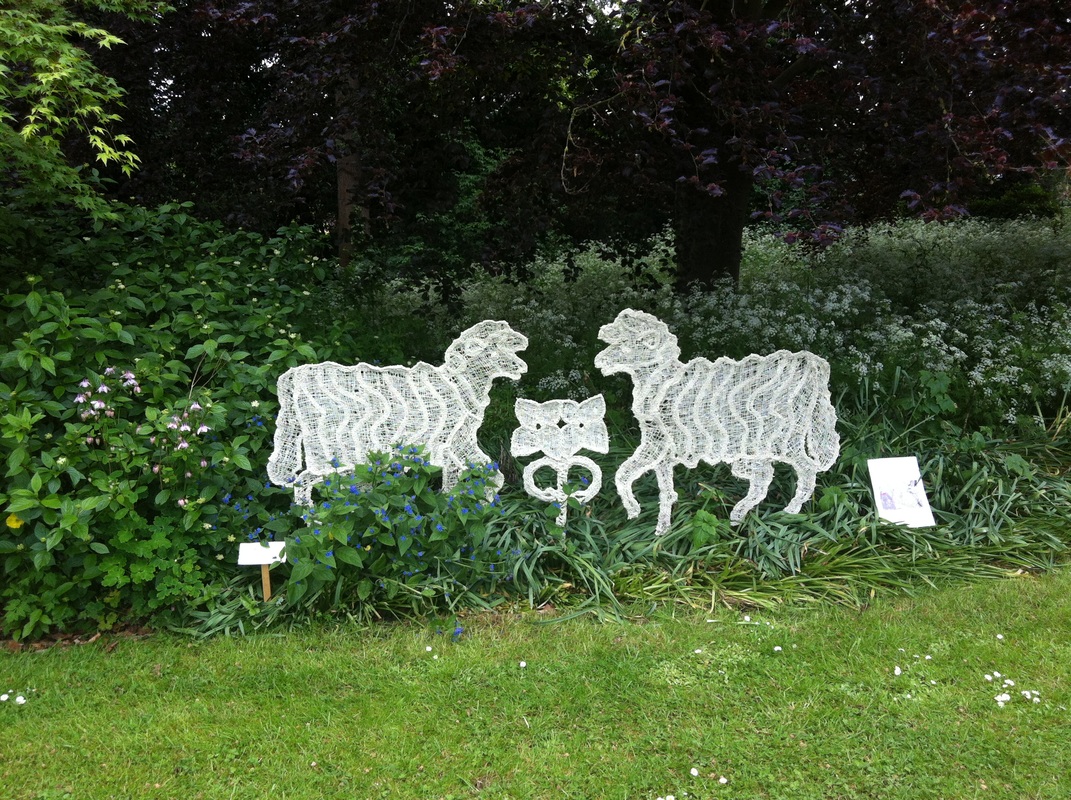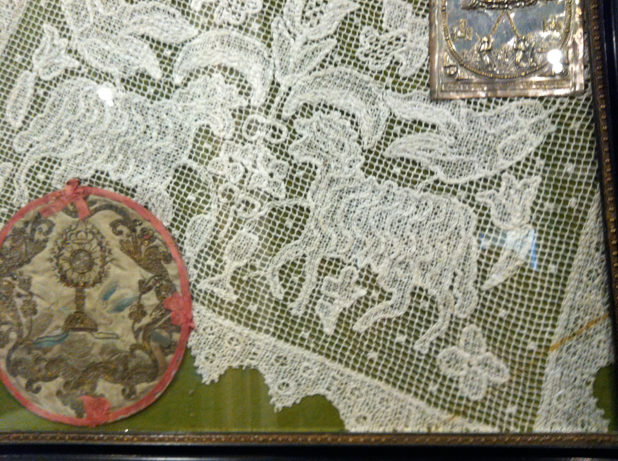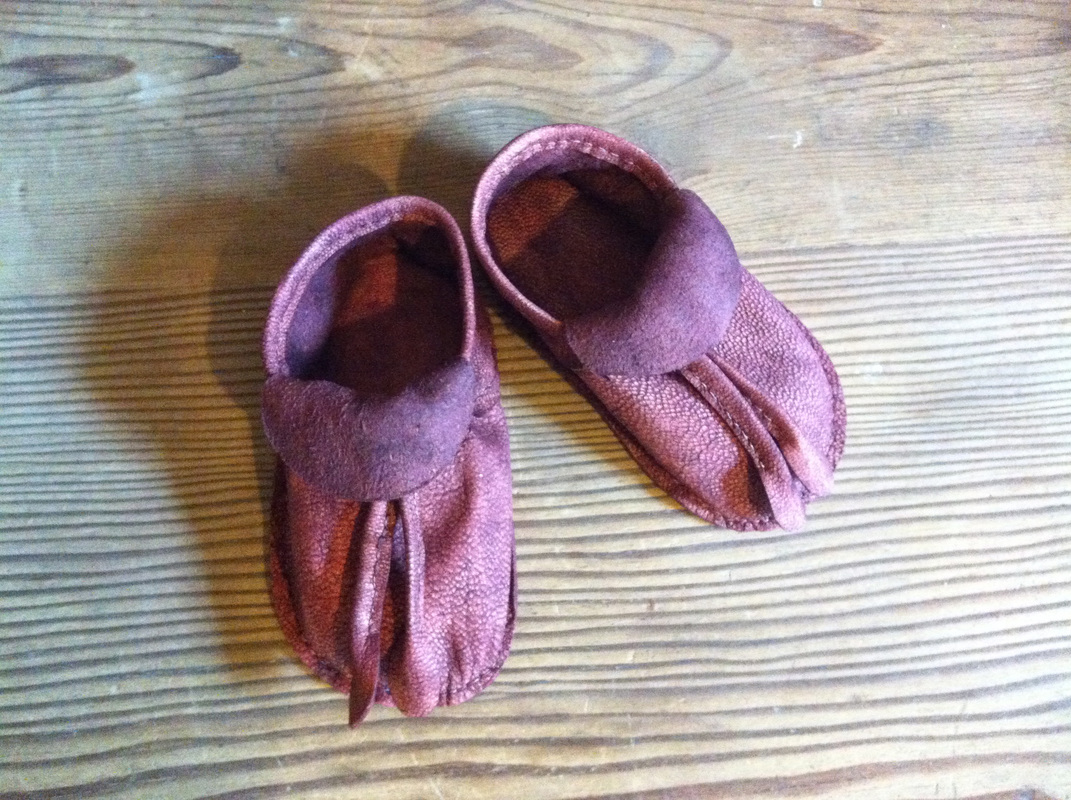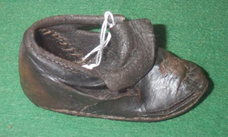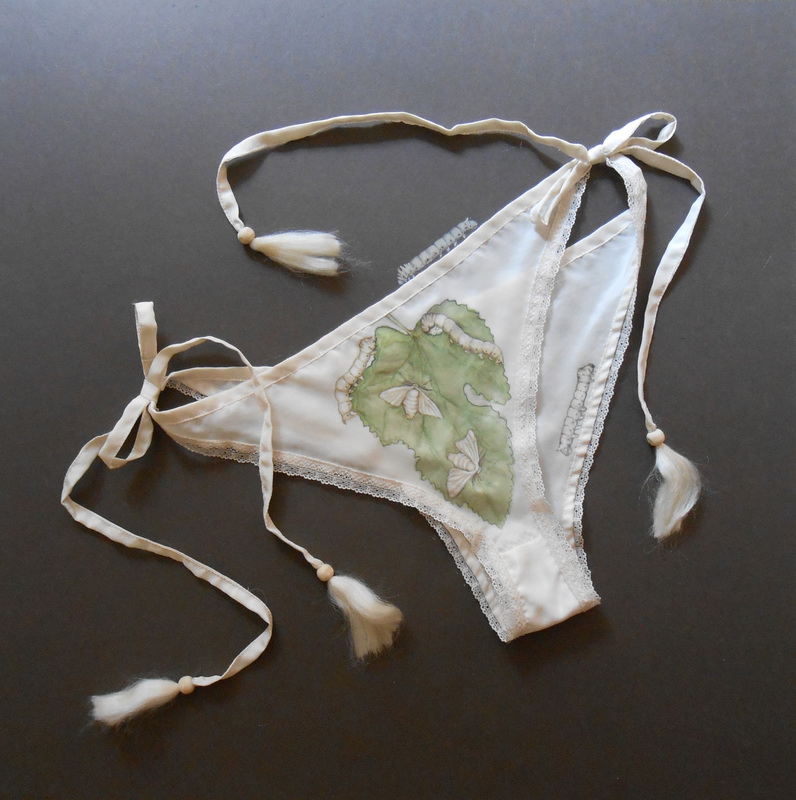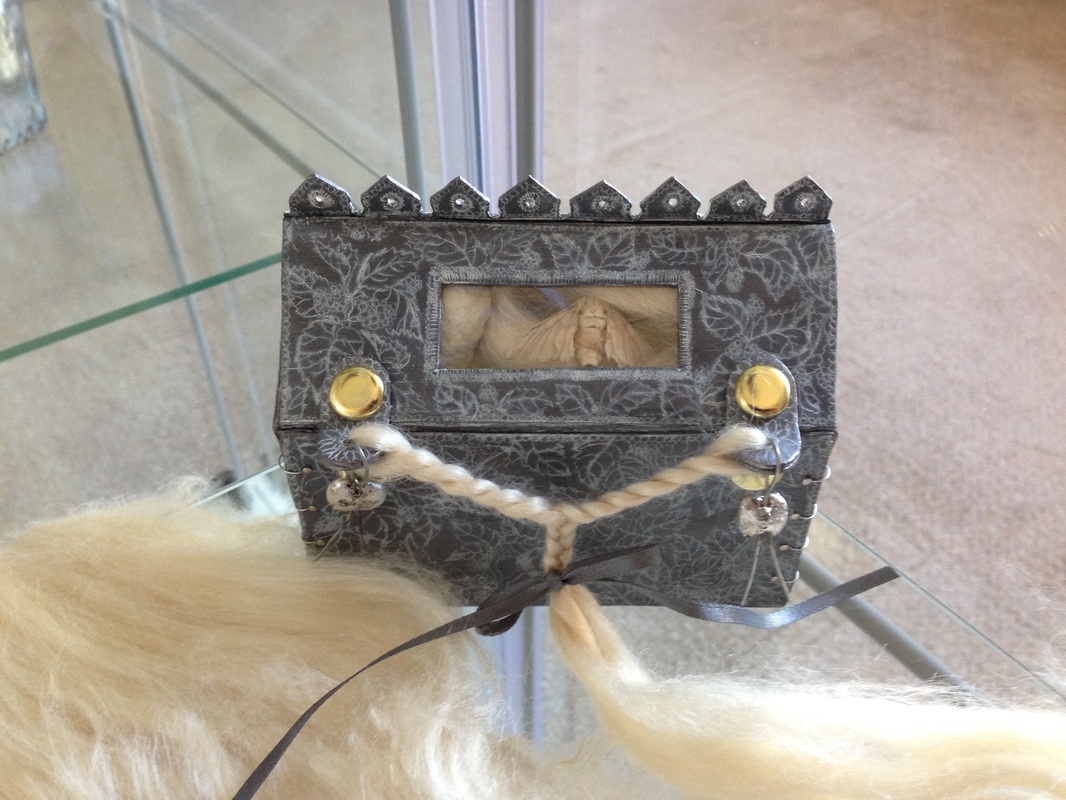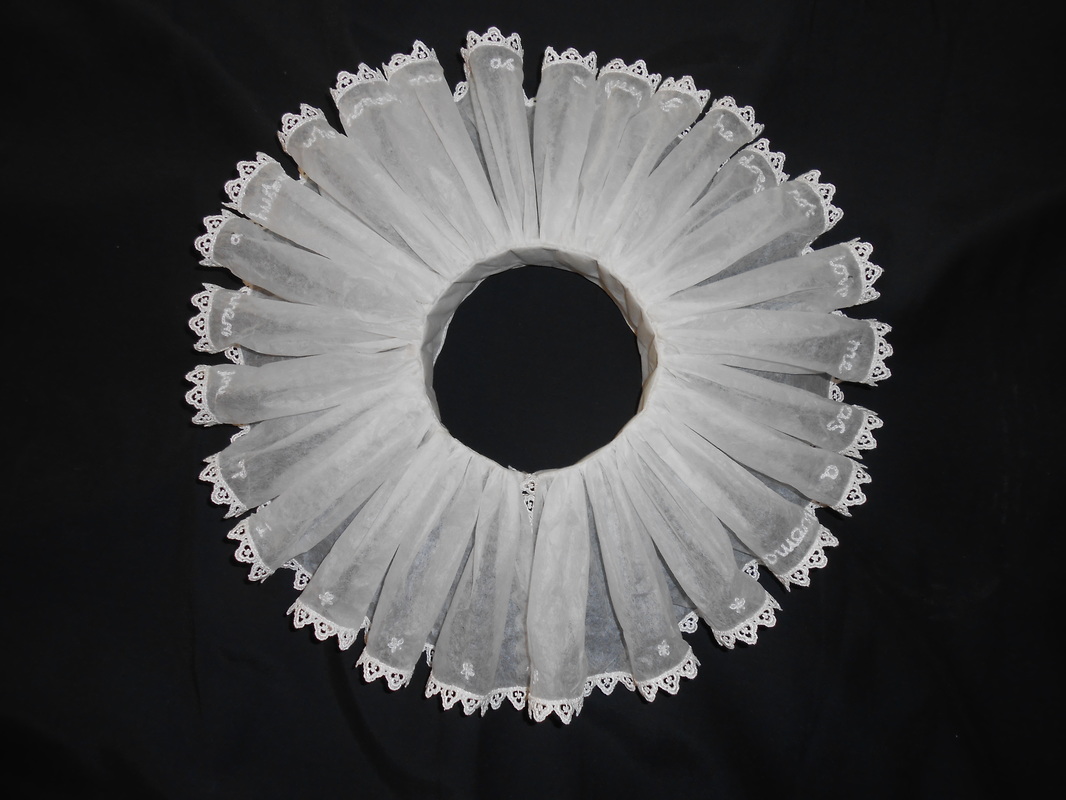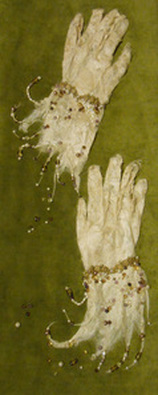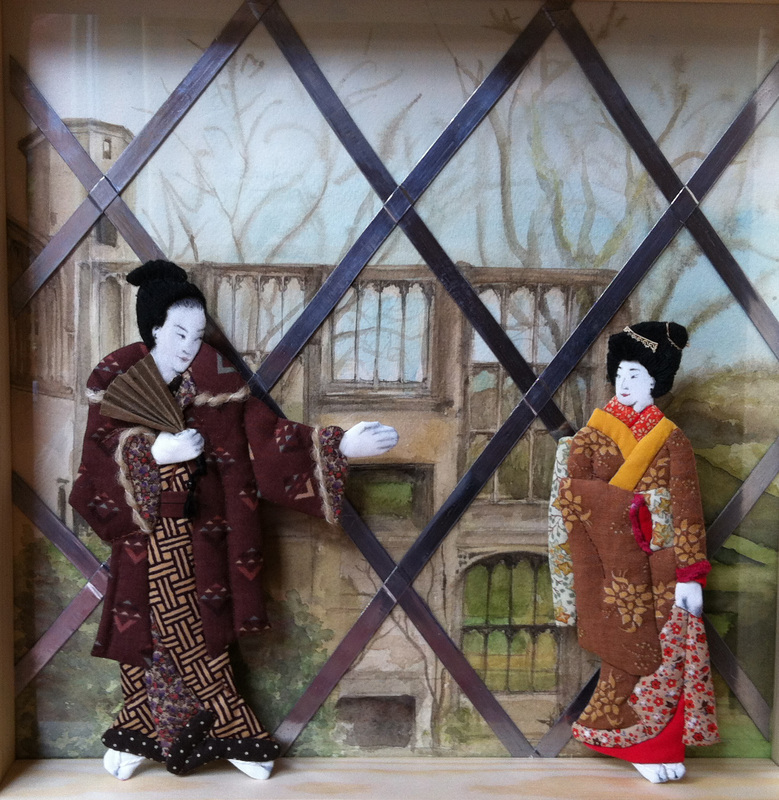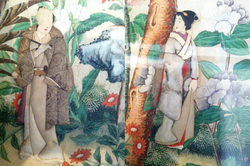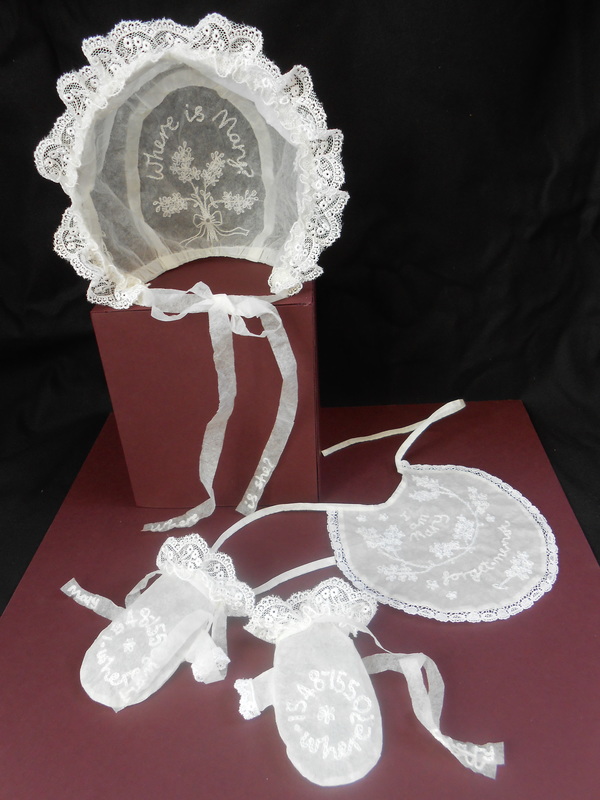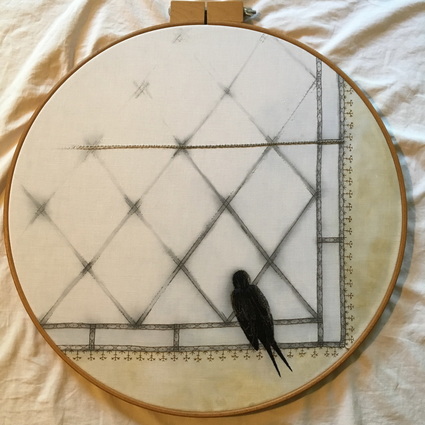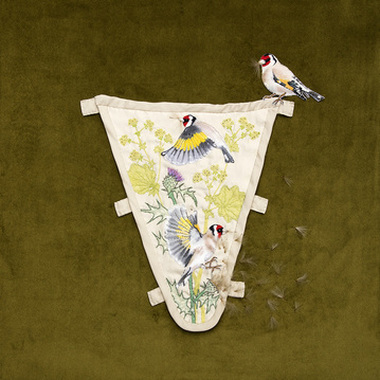 watercolour, and stitch on silk, thistledown The design is based loosely on a beautiful 17th century embroidered stomacher in Emma Dent’s fabulous textile collection, one of my favourite things about Sudeley Castle. The imagery is of goldfinches flying amongst lady’s mantle and milk thistle, scattering thistledown as they feed on the seeds, all things that can be seen in the herb and wildlife gardens. The Stomacher tells a story, not just about Sudeley. It is one of protection, based on tradition, religion, symbolism and ancient herbal knowledge. Lady’s Mantle: In the Victorian Language of Flowers it stands for protection. According to the 17th Century herbalist Culpeper; “Venus claims this herb for her own. Ladies Mantle is very proper for those wounds that have inflammations, and is very effectual to stay bleedings, vomitings and fluxes of all sorts…[and] in all wounds inward and outward …..…which wonderfully drieth up all humidity of the sores, and abates inflammation therein”. In modern herbalism Lady’s Mantle is specifically used for the treatment of excessive menstruation. The Goldfinch: Goldfinches have always been thought of as very special little birds. They are a good luck charm, warding off all contagion, even the plague and bestowing symbolic good health upon anyone who sees one. These birds also had an important symbolic or allegorical meaning. The colour gold was considered to have curative powers and they have gold on their wings According to medieval Christians the splash of red on the face was a bloodstain acquired by the bird when it tried to remove the crown of thorns from Christ’s head at His crucifixion. The favourite food of the goldfinch is thistle seed and their affinity with thistles is another Holy one: the crown of thorns again. So the goldfinch reminds us of Christ’s sacrifice for the salvation of mankind. Milk Thistle: So named because tradition has it that the milk from the Virgin Mary once fell upon the plant and that is why the veins of the leaves are milky white. It was considered to be good for breaking up kidney stones and curing jaundice and according to Culpeper, who calls it by its other name, Lady’s thistle, it had one other very important curative power. “Our Lady’s thistle is under Jupiter and thought to be as effectual as Carduus Beneductus [Holy thistle] for agues, and to prevent and cure the plague.” Modern research has shown that the ripe seeds contain a powerful antioxidant and there is evidence that this may help fight various cancers and help in the treatment of hepatitis and cirrhosis of the liver. You can read about all this in more detail in this article on my blog.
silk fabric, tussah silk, watercolour.
The strange, unconventional beauty of the silk moth, painted upon the silk they make, the mulberry leaf taking the place of the traditional fig leaf. Lead, steel wire
Made from lead, containing silk, a cocoon and a silk moth in grateful homage to the humble silk moth, for producing such a beautiful fabric.
This was made in response to my very first visit to Sudeley Castle in 2011 and has been at the Castle for several seasons now.
I was particularly struck by the story of Katherine Parr. I looked at and (tried to!) read her writings and I gazed for ages at her beautiful memorial in St Mary’s Church, finding the knowledge that her remains were actually below it, rather discomforting and sad. She died from puerperal (childbed) fever. We are told that the child, Mary became an orphan at just a few months old when her father was executed for treason and that she was sent to live with Katherine Willoughby, the Duchess of Suffolk. I have been able to find out very little else. It seems all record of her disappears after August 29 1550, the eve of her second birthday. The work is not about embroidery and stitch. It is about the ACTS of embroidering and stitching; the almost ritualistic time, care and love which goes into the making of those very special first clothes that celebrate the arrival of a new child. The site of baby clothing often provokes unexplained sentimental reactions, particularly from women. Freud tells us that this is fetish. Such clothing reminds us of the child itself and is embraced as a substitute for the ‘lost’ child. Freud means ‘lost’ in terms of the fleeting period of babyhood, but in this case, Lady Mary Seymour was apparently quite literally ‘lost’. Watercolour and stitch on cotton
I have used stitch direction to emphasise the subtle shades of blue, green and predominantly black and the lustre of the feathers. For the architectural features I used repetitive patterning. The geometrical design of the leaded windows offered an opportunity to refer to the geometric patterns of Tudor blackwork so the patterns used are based on blackwork stitch patters although are rendered far more freely, ignoring both the traditional method of thread counting and the strictly limited palette of blackwork embroidery. |
